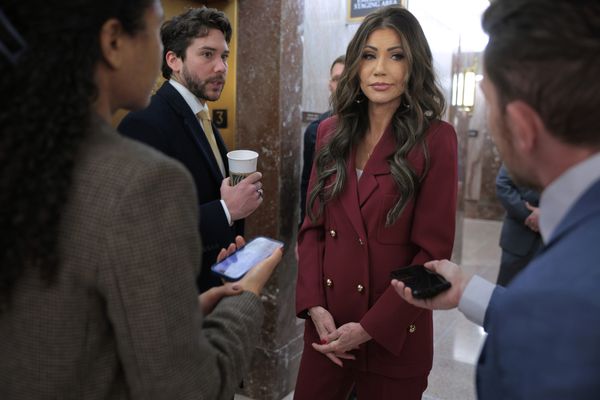
Happy Monday. It’s Fortune tech reporter Alexandra Sternlicht filling in for Jacob.
Over the last week, I interviewed six TikTok creators (each with over 50,000 followers on the platform) about whether they were interested in creating YouTube Shorts, the Google-owned version of TikTok. The answer was a resounding “yes.” Why? Because TikTok has failed to compensate creators who bring users—and, in turn, advertisers—to the platform.
For creators, making videos for YouTube Shorts is more than just attention vengeance: The platform will begin sharing advertising revenue with creators starting Feb. 1. These TikTokers produce content in niches that range from mental health to cupcake baking, but they’re all frustrated by low payments from TikTok and plan to start creating content specifically for YouTube Shorts in the hopes of capitalizing on the Google-owned platform’s newfangled payment scheme.
“I can't keep giving valuable information if I’m not making anything back because then I need to go get a real fucking job,” says Sabrina Zohar, who started her TikTok in 2022, and has since attracted 132,000 followers and 2.8 million likes to her mostly relationship- and anxiety-focused content. Zohar said she plans to start focusing on YouTube Shorts in addition to TikTok. “I don't see a long-term strategy of me being able to monetize on a platform like TikTok.”
Starting on Feb. 1 creators in the YouTube Partner Program (users with over 1,000 subscribers and 10 million valid public Shorts views) can monetize their YouTube Shorts videos with ad revenue sharing from the tech giant. YouTube will give 45% of advertising revenue on in-feed ads to creators, pocketing 55%. YouTube Shorts looks almost identical to TikTok—it’s mobile-first, 60-second max, fullscreen video with an algorithmic recommendation page as the feature's home screen.
It’s a big deal because YouTube has helped mint the highest-paid internet superstars with its AdSense program that shares 55% of revenue with YouTube Partners on pre-, mid-, and bumper ads on longer-form YouTube content. These people include the highest-paid creator MrBeast, who made around $110 million in 2022, per Forbes.
Shorts monetization is happening against the backdrop of an increasingly competitive video social ecosystem. Meta shared the success of its short-form video product Reels, during an otherwise catastrophic year, in an internal memo obtained by the Wall Street Journal. And a number of creators with whom I spoke also expressed confused satisfaction with Reels Bonuses, money paid out to Reels makers for viral videos on Facebook and Instagram.
Schannon Yodice, known to her 160,000 Instagram followers as That Tile Chick, says she makes an average of over $6,000 a month from Reels Bonuses, a payment project from Meta to incentivize and reward viral videos. “I tried to find a rhyme or reason—and I’m not really sure,” she says about her monthly Reels Bonus payments, which reached a high of $24,000 for the month of April last year.
Meanwhile, TikTok appears to be largely unsuccessful in paying creators. Last week I wrote about TikTok Pulse, the company’s version of AdSense, in which creators with top 4% videos in categories like fashion and food can, in theory, split ad revenue 50/50 with TikTok. Every creator I interviewed—now at 10—has earned less than $5 from Pulse.
This follows the company’s disastrous $1 billion Creator Fund that the company reserved to pay creators based on engagement. TikTokers in the Creator Fund reported making mere cents. Two creators with whom I spoke—Alexa Santos and Sabrina Zohar—went so far as to exit the Creator Fund because they believed TikTok demoted their content after they joined the payment initiative. (This conspiracy theory has gained traction on Reddit and other corners of the internet, but remains unsubstantiated.)
These ticked-off creators join equally agitated legislators. As Jacob wrote in Data Sheet last week: Politicians are increasingly calling to ban TikTok over concerns about the app’s link to China. Today we learned that TikTok’s CEO Shou Zi Chew will speak before the House Energy and Commerce Committee in March to assuage senators about the company’s China linkage. To coax anxious legislators, ByteDance will store all American user data on Oracle-owned servers.
It’s a slightly strange fight as TikTok power users are mostly young—many below voting age—so the platform's main constituency is mainly absent from the political debate. TikTok's fan base, however, is enormous: The app has an estimated 834 million users, 25% of whom are under 20. Though TikTok does not technically allow users under 13 to join, age verification is merely a checkbox, and Surgeon General Vivek Murthy went on CNN Newsroom this Saturday to say that 13 is too young for social media.
That said, the creators with whom I spoke span a wide range of ages. Mary Negron, 41, says she spends an average of 30 hours per week going live on her TikTok account, marynegronschoolofnails, and has made just $514.50 in two months from streaming on the platform. She’s happy for the extra cash to support her nail technician school, but is ready to start making YouTube Shorts. “Nowadays any way that you can bring attention to your brand and still make money and it not be too much effort—I mean, who wouldn't do it?”
Alexandra Sternlicht







